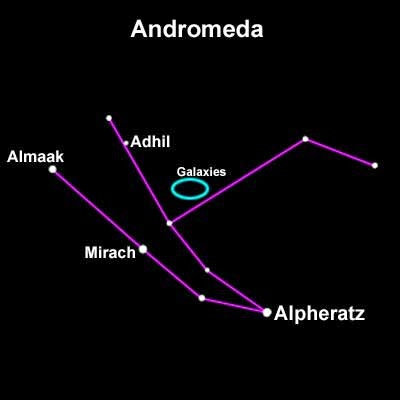Andromeda galaxy also known as M31 is the brightest galaxy in the night sky. It has an apparent magnitude of 3.44. Hence it can be easily seen even without the aid of any optical device. Although if you want a good view of the galaxy then i would suggest the use of a good binoculars rather than a telescope. Now locating Andromeda can be a little tricky but if you know the night sky well enough then you can use other constellations to reach Andromeda.
Now lets start by locating Taurus, this is a fairly easy constellation to locate as it lies right next to Orion. All you have to do is extend the belt of Orion in the direction of Mintaka and you would reach Aldebaran which is the alpha star of Taurus. Since Taurus is a zodiac constellation we know that it has to lie on the ecliptic. If we go down the ecliptic the first constellation that we get is Aries followed by a very faint constellation Pieces. Andromeda constellation lies between Pieces and Cassiopeia. The other way is by imagining Cassiopeia as a huge "M". Where Andromeda lies directly above the giant "M". The picture below would make it easier to understand.
Andromeda constellation consists of 16 main star although there are around 7 bright stars which form the recognizable crooked "V" shape of the constellation. So lets focus on these 7 stars. The star at the base of the crooked "V" is known as Alpheratz which is shared by both Andromeda and Pegasus constellation. Although it is considered as the alpha star of Andromeda.
(The crooked "V" shape of Andromeda)
Now we have spotted Andromeda galaxy along with its alpha star. In order to locate the galaxy we first have to locate the star Mirach which is the 3rd star from Alpheratz. Opposite Mirach is another star called Mew Andromeda. The Andromeda galaxy is located right next to this star. At first the galaxy appears as a foggy white patch. Infact it might not even look like a proper galaxy but if you use a pair of good binoculars then you should be able to spot the arms of the galaxy and also its satellite galaxy known as M32.
*Please post your comments/suggestions so that i can improve my blog. You can also subscribe or follow the blog in order to get updates through E-mails.























-labeled.png)

